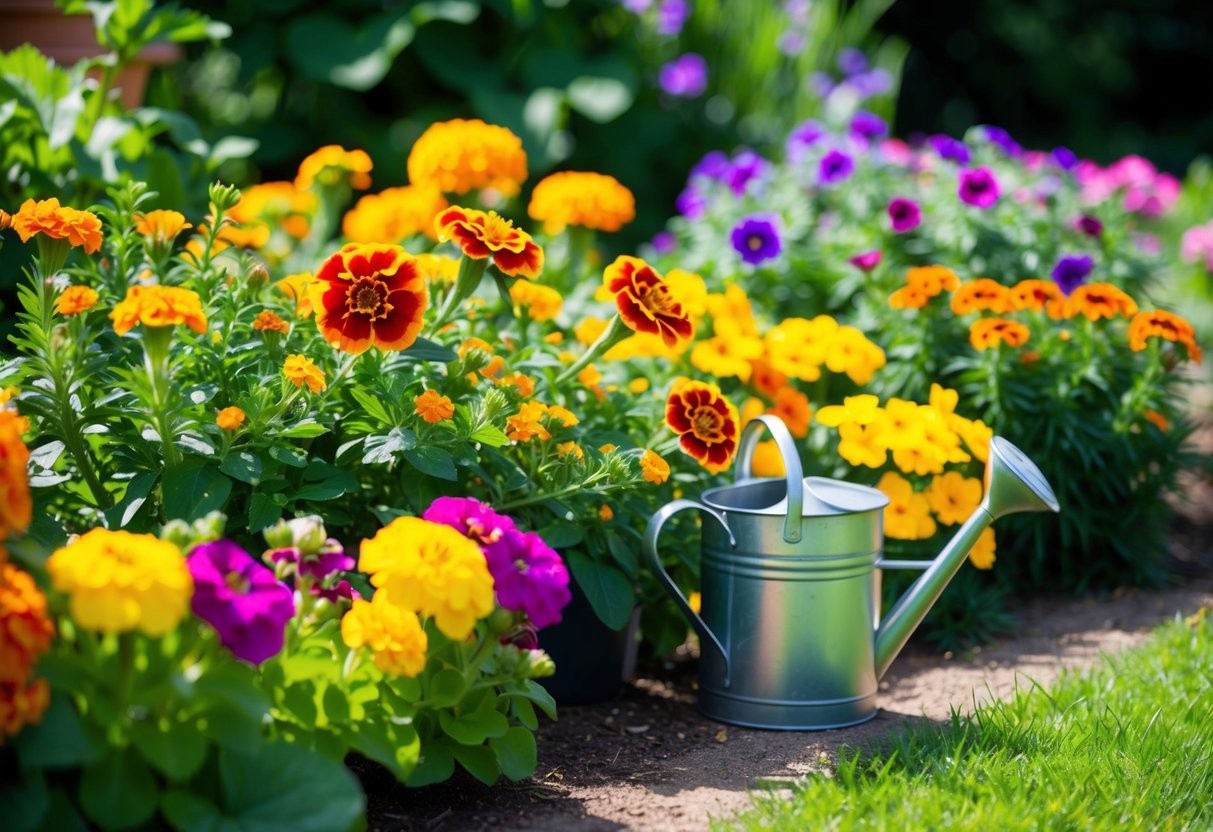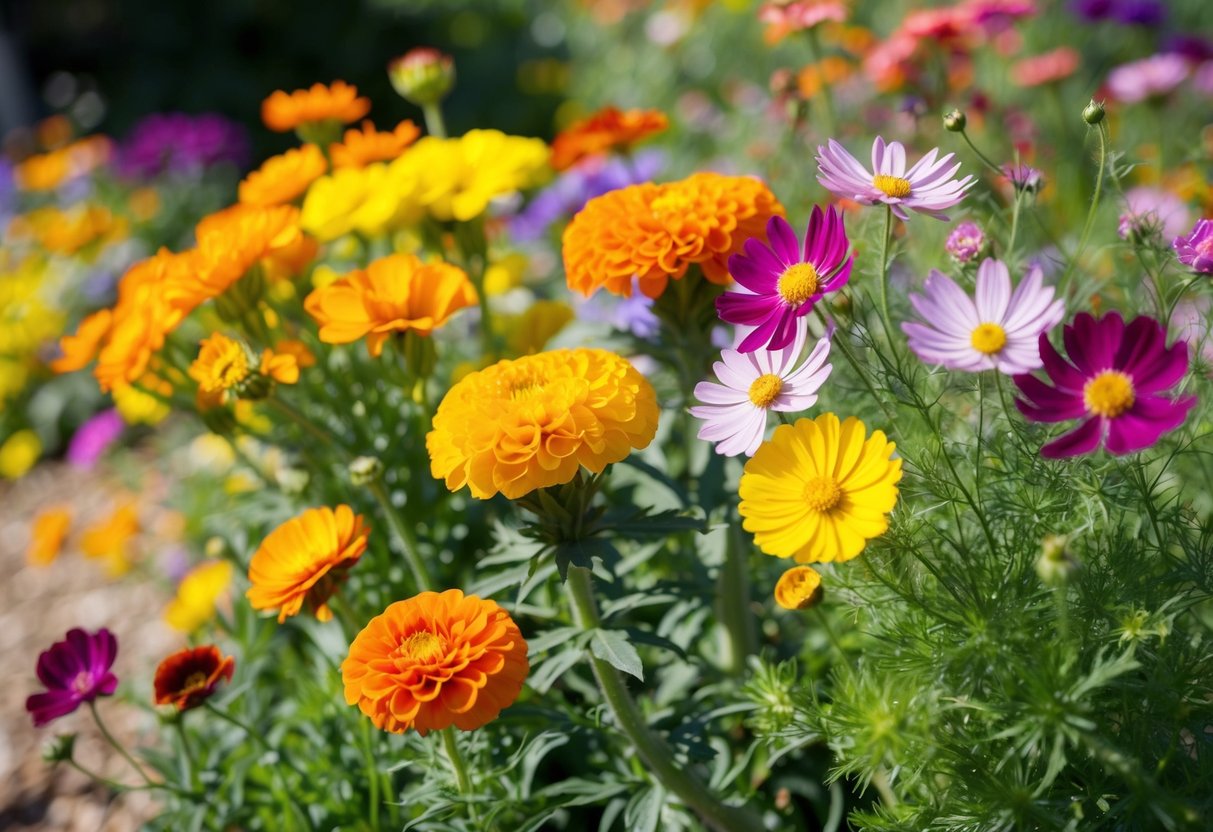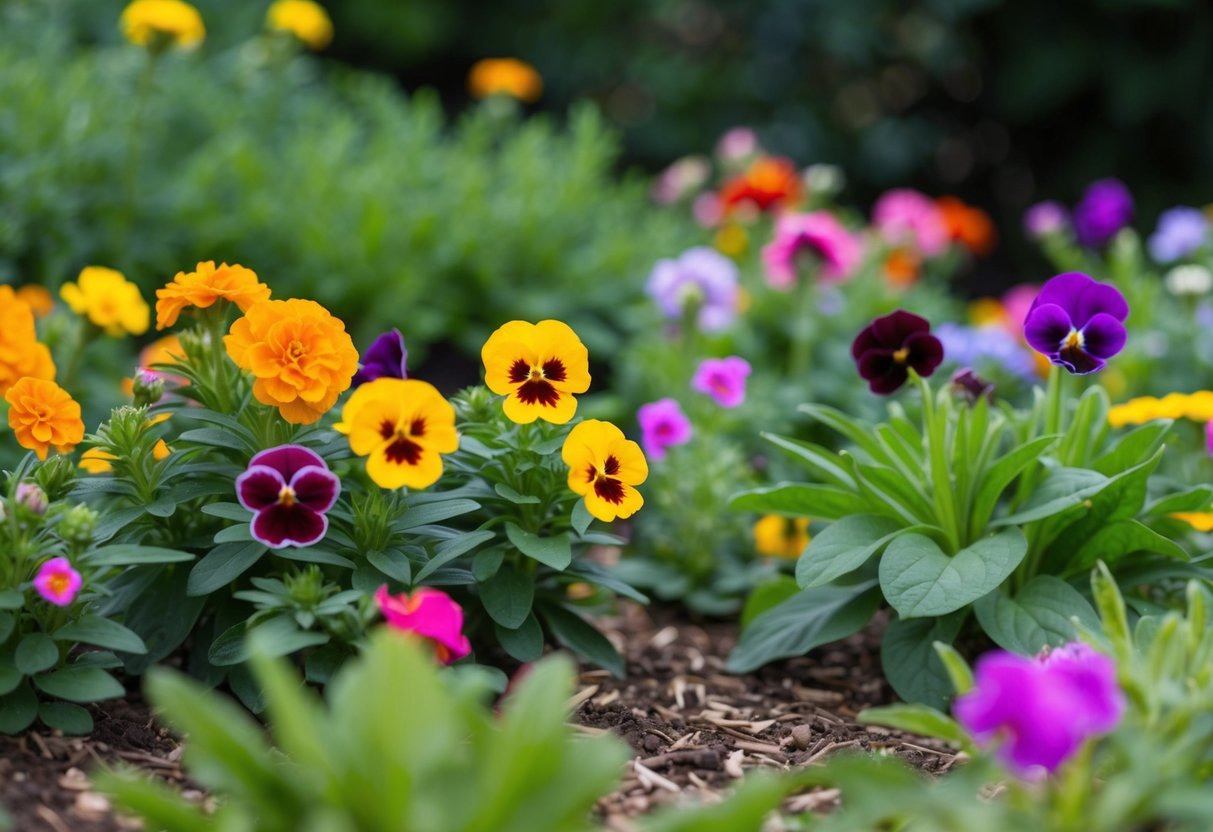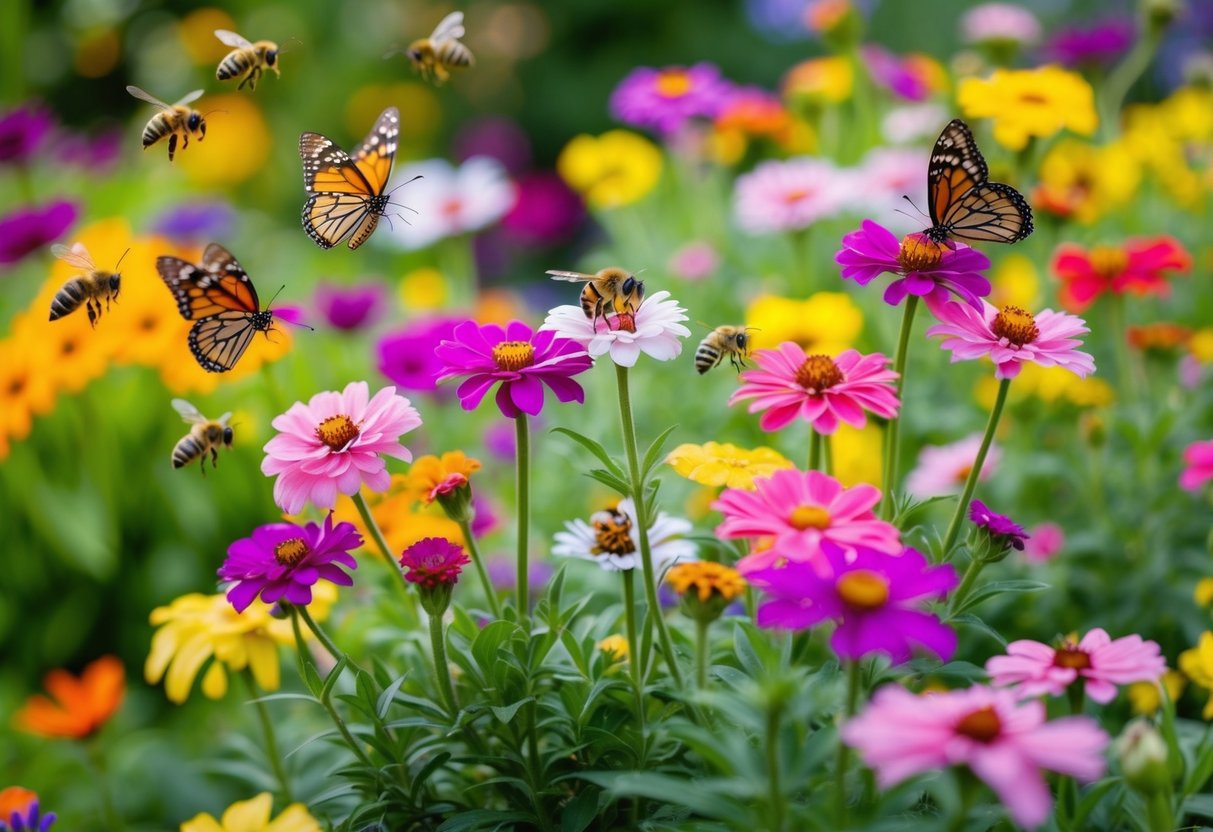What is the Easiest Flower to Grow in a Garden? Top Picks for Beginners
Looking to start your garden journey but not sure where to begin? Choosing the right flowers can make a big difference, especially if you’re a beginner gardener.
One of the easiest flowers to grow in your garden is the Black-eyed Susan. These cheerful blooms are not only beautiful but also reliable and require minimal effort to thrive.

You might also want to consider Sweet Alyssum for your garden. They offer a delightful honey fragrance and come in lovely colors such as white, pink, and purple. These flowers are perfect for adding a pop of color and are easy to manage.
If you’re seeking variety, Purple Coneflowers could be another great choice. They grow well in many areas and bring long-lasting blooms to your garden. Starting with easy-to-grow flowers like these can set you up for gardening success and the joy of seeing your space filled with vibrant life.
Choosing the Right Flowers for Your Garden

When selecting flowers for your garden, it’s important to match the plant to your garden’s conditions.
Consider the differences between perennials and annuals, assess how much sunlight your garden gets, and understand the soil needs of the flowers you want to grow.
Understanding Perennials and Annuals
Perennials live for more than two years and usually bloom each season. These plants, like Purple Coneflowers, return year after year, reducing the need for replanting. They can be a great choice if you want a long-term garden investment.
Annual flowers complete their life cycle in one year. They often have bright blooms and can provide stunning seasonal color. Some, like marigolds, grow quickly and are easy to manage. They are ideal if you enjoy redesigning your garden yearly.
Choosing between these depends on your gardening goals. Perennials offer stability, while annuals provide variety. Consider mixing both for balanced visual interest and a mix of maintenance levels in your garden.
Assessing Sunlight: Full Sun vs. Part Shade
Knowing how much sun your garden receives helps you choose the right flowers.
Full sun areas get at least six hours of sunlight daily and are perfect for plants like Black-eyed Susans, which thrive in bright conditions.
Part shade refers to locations with 3-6 hours of sun, which benefit plants needing less intense light. Check the sunlight needs of each plant. This ensures optimal growth and bloom.
Use this information to plan your garden layout. For instance, place sun-loving flowers in southern parts of your garden and shade-tolerant ones under trees or on the northern side of structures.
Considering Soil Needs
Different flowers prefer various soil types. Many easy-to-grow flowers like Cosmos do well in well-drained soil. This means water doesn’t pool around the roots, preventing rot.
Amend your garden soil with compost to improve drainage and nutrient content, especially if it’s clay-based. Testing your soil pH can help you understand if it meets the specific needs of your chosen flowers.
Choosing flowers that match your soil type can improve their growth and health. Knowing the USDA zone (typically 3 to 9 for many common flowers) ensures compatibility with your local climate conditions.
Top Easy-Care Flowers for Beginners

Choosing easy-to-grow flowers for your garden ensures a lively and colorful display with minimal effort. These flowers are not only simple to care for, but they also attract pollinators and can be used as cut flowers for indoor arrangements.
Marigold: A Burst of Color
Marigolds are cheerful flowers that come in shades of orange, yellow, and red. They thrive in full sun and are known for their pest-repelling qualities. These flowers can brighten up your garden while keeping it healthy.
Marigolds are low-maintenance and can tolerate various soil types. They are ideal for borders and container gardening. Just make sure they get plenty of sunlight.
Their quick growth and bold colors make them perfect for any garden. Plus, marigolds adapt well to different climates, making them suitable for many regions.
Sunflowers: Reaching for the Sky
Sunflowers are tall and striking, known for following the sun. They can grow in almost any soil type as long as it’s well-drained. These iconic flowers attract bees and other pollinators, making them great for your garden’s ecosystem.
With their towering presence, sunflowers can add vertical interest to your garden. They are also good cut flowers, bringing a sunny touch to your home.
Plant them in sunny spots, and they’ll quickly become a garden highlight. Sunflowers’ joyful appearance and ease of care make them an ideal choice for beginners.
Zinnias: A Spectrum of Beauty
Zinnias are vibrant flowers available in various shapes and colors, offering a rainbow of options for your garden. They’re known for their long-lasting blooms and ability to attract butterflies.
These flowers thrive in full sun and prefer well-drained soil. They are excellent for use in flower arrangements due to their wide range of colors and sturdy stems.
Zinnias can grow in different climates and are generally disease-resistant. Their colorful display and low-maintenance nature make them a favorite for novice gardeners.
Cosmos: Starry Simplicity
Cosmos are delicate flowers with feathery foliage and daisy-like blooms. These flowers are drought-tolerant and can thrive in poor soil conditions, making them easy to care for.
They prefer full sun and can attract bees and butterflies to your garden. Cosmos are also known for their long blooming season, providing color throughout summer and fall.
Their airy nature adds a whimsical touch to your garden. With minimal care requirements, cosmos are perfect for beginners looking for a charming garden addition.
Creating a Low-Maintenance Flower Garden

A low-maintenance flower garden can bring beauty and joy without taking up all your free time. You can achieve this by choosing easy-care options like using containers, windows boxes, and groundcover plants. Adding bulbs like daffodils gives seasonal bursts of color with little effort.
Utilizing Containers and Window Boxes
Containers and window boxes are perfect for creating beautiful flower displays with minimal upkeep. They allow you to control soil quality and moisture levels easily.
Choose plants like pansies for their vibrant colors and low-care requirements. Containers can also be moved to control the amount of light they receive.
Window boxes add charm to your home and are ideal for small spaces. Planting bee-friendly flowers ensures your garden helps support local wildlife.
Opt for plants that thrive in similar conditions to make care simpler. Remember to consider the size of the container, as plants need room to grow, and ensure proper drainage to avoid waterlogging.
Groundcover Choices
Groundcover plants are excellent for reducing the amount of weeding and watering needed in your garden. These low-growing plants spread quickly, filling gaps and suppressing weeds.
Choose drought-tolerant and tough varieties like creeping sedum or lavender, which are known for being low-maintenance.
Creeping sedum is available in many types, offering options for almost any garden style with minimal care. Consider using a mix of plants for visual interest and extended blooming periods.
Choosing groundcover options that are bee-friendly helps support pollinators while keeping your garden manageable. They also help retain soil moisture, reducing the need for frequent watering.
Incorporating Bulbs for Seasonal Interest
Bulbs like daffodils and tulips provide stunning displays in spring with fantastic ease. Once planted, they come back year after year, requiring little intervention.
Plant bulbs in clusters for a more natural look and to create large splashes of color.
Consider the blooming times of different bulbs to ensure your garden has interest throughout multiple seasons.
Bulbs can be interplanted with other perennials, making your garden look fuller while still being easy to tend. Look for bulbs that naturalize well, meaning they will multiply over time without additional effort, giving you more flowers each year without extra work.
Special Considerations for Small Spaces

Gardening in small spaces requires creativity and smart choices. You can make the most of your limited area by using vertical elements, choosing the right flowers, and maximizing patio space.
Hanging Baskets and Trellises
Using hanging baskets and trellises is a great way to add vertical interest to your garden.
Hanging baskets can be filled with vibrant blooms such as nasturtiums or moss rose, which thrive in small spaces. They provide an explosion of color and can be hung at different heights for extra dimension.
Trellises are perfect for climbing plants. Consider growing morning glories or sweet peas. These flowers not only save ground space but also add height and drama to your garden.
You can position trellises against walls or create dividers in your small garden to section off areas.
Both hanging baskets and trellises make it easy to switch plants in and out with the seasons. This flexibility keeps your garden looking fresh year-round.
Flowers for Rock Gardens
Rock gardens are ideal for small spaces as they offer a natural and rustic look. They require minimal maintenance once established.
Opt for hardy flowers like sedum or moss rose, which are drought-resistant and thrive in rocky soil.
Sedum is a low-lying plant that provides colorful foliage and small blooms, perfect for filling gaps in your rock garden. Moss rose adds brilliant bursts of color and does well in full sun, making it a great choice for rocky areas exposed to plenty of light.
Arrange the rocks to create different levels and pockets of soil where plants can thrive. This method not only saves space but also creates a more visually appealing garden area.
Making the Most of Your Patio

Your patio can also become a beautiful garden oasis. Use containers and pots to grow flowers such as nasturtiums, which are perfect for bringing bright colors to your patio.
Nasturtiums grow well in containers and are easy to care for with regular watering.
For vertical gardening on your patio, use railing planters or wall-mounted options. These provide extra planting space without taking up any ground area.
Try incorporating a mix of textures and heights with plants like sedum or trailing nasturtiums.
Incorporating a small bistro table or chairs can also transform your patio into a cozy spot to enjoy the view, making the most of your gardening efforts in a compact space.
Attracting Wildlife with Your Flower Choices

Invite nature into your garden by choosing flowers that attract butterflies, bees, and birds. These creatures love bright colors and nectar-rich blooms, making your garden lively and full of life.
Choosing Flowers That Attract Butterflies and Bees
Pollinators like bees and butterflies are essential for a healthy garden. To attract them, consider planting echinacea, lavender, and purple coneflowers. These flowers have vibrant colors and are rich in nectar.
Echinacea, better known as coneflowers, is easy to grow and attracts many pollinators. Butterflies and bees alike are drawn to their purple-pink petals.
Lavender not only adds a calming fragrance to your garden but also acts as a magnet for pollinating insects. These aromatic plants thrive in sunny spots, offering both beauty and function.
Nectar-rich flowers like black-eyed Susans also work wonders. They bloom in bright yellows and are hardy, requiring little maintenance while providing an essential food source for your buzzing and fluttering friends.
For more on choosing the right plants for wildlife, visit this guide.
Bird-Friendly Garden: The Role of Sunflowers and More
Birds are another delightful addition to any garden. Sunflowers are excellent for attracting them. Their large, seed-filled heads provide food, especially for finches and other seed-eating birds.
Besides sunflowers, other bird-friendly plants include berry-producing shrubs and trees that birds love. These plants offer both nutrition and shelter, encouraging birds to nest nearby.
Planting a mix of these can create a vibrant bird-friendly environment. Be sure to include native species, as they are well-suited to local birds. A variety of plants ensures birds visit your garden throughout different seasons. This provides a sanctuary and enriches your gardening experience. For more bird-friendly tips, check this resource.







